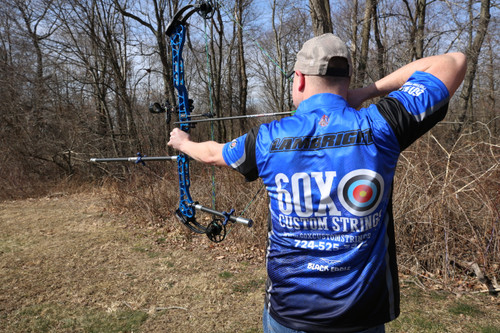BACK MUSCLE BASICS FOR THE IMPROVING ARCHER
Jan 5th 2018
There probably isn’t anything written or spoken of more in archery, than back muscles and proper usage. If you’ve been into archery for any period of time, and have a desire to improve, you’ve probably read about this, and hopefully use your back muscles to shoot. Using your back muscles in general can mean anything from:
- Drawing with them
- Executing the release with them
- Holding the bow back with them
In this article, we are going back to the basics of archery and discussing why back muscles are an important part of your shot. We don’t want to have an anatomy/physiology class; we just want to give you a basic understanding.
Tension Causes Movement
One of the elements to shooting accurately is making sure that you're holding your bow steady. If you're using your hands/arms/shoulder/neck only, you will create tension. The tension built in these areas will radiate down to your sight pin and guess what? The more tension you have, the more your pin dances.
Large Muscles in Your Back
If you're not using your hands/arms/shoulder/neck, you're probably wondering what muscle or bone system you should use to hold the bow up and back. The answer is the large muscles in your back on the release arm side at full draw. You can then relax everything else and enjoy a good sight picture. Most of the top pros and amateurs will feel bone contact on the bow arm and back muscle compression on the release arm side at full draw. This is an easy way to relax while aiming.
"Feel" Your Back
How can you "feel" your back? At full draw, prior to anchor, drop both shoulders. Make sure they are naturally down, and then take your release side elbow and try to take it backwards and around. The movement of the elbow will force you to "feel" your back. When it's in place and compressed, it's "anchored" and you're ready for the traditional anchor of your release to your face. This is the muscles that slides your shoulder blade towards your spine. It's big and it wants to work, so let it! If you can't feel it, your draw length may be too short or too long, or your shoulders are still too high. Practice it in front of a target and see how it feels.
Let Your Back Do the Work for You
It doesn’t matter if you shoot fingers, traditional, release aid or a hinge jaw, let your back do the work for you. You can learn to incorporate your back muscles during the draw cycle now that your know what it feels like. This will speed up the time of your shot execution, and also ensure your form is consistent.
If you want to take it to the next level, you can incorporate the same back muscle to execute the release aid. This is an advanced technique that will be talked about in upcoming articles from 60X Custom Strings.







